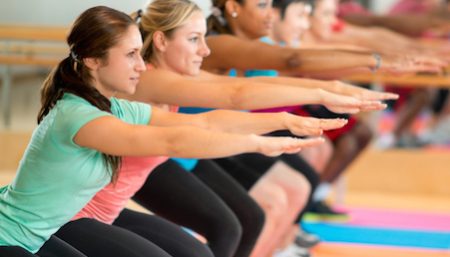There is a thin margin between over-training and under stimulating a muscle for growth. While sweating it out in the gym one loves to reap the benefit of their labour. What happens, if your body stops responding in a positive way. How do you know if you’re guilty of exercise overindulgence?

Check if any of these symptoms apply to you:
- You’ve been exercising frequently, but your regular workout seems more difficult
- Exercise leaves you more exhausted than energized
- Your performance is decreasing despite diligent workouts
- You experience a loss of co-ordination
- It takes you longer to recover from muscle soreness
- You have no appetite
- Your stomach hurts
- You get sick often
In addition, the psychological benefits that come with exercise disappear when you over-train, so you might feel depressed and apathetic, have difficulty concentrating, or even have reduced self-esteem.
If you’ve been working out too hard and you feel any of these symptoms, it’s time for you to cut back a little or take a break.
How to avoid Over-training?
Moderation is the key.
If you find yourself exercising beyond the point of exhaustion, while injured, or to the exclusion of other aspects of your life, then it is definitely time to take a break. If cycling begins to drain rather than revitalize you, consider slowing the pace a little, or even stopping altogether for a short while.
Lighten the load
If you don’t want to stop altogether, then just try lighter workouts for a while. Also, remember that taking a few days off is okay. If you need to take a longer mini-break from exercising, reduce your meal portions so you won’t have to worry about putting on weight. Your body doesn’t need as much food when you’re not exercising.
Muscle won’t turn into fat if you stop exercising. Muscle and fat are two separate things. It’s like saying your car will turn into a bicycle if you don’t drive it. |
Take up, The Pre – Exhaust Training Principle: involves performing isolation exercises which fatigue a target muscle, followed immediately by compound (multi-joint) exercise where this muscle is the prime mover.

According to a 1996 study in which subjects that used the principle gained significantly more muscle mass than those who trained as usual. Muscle growth is largely attributed to volume of training. To begin with, establish which muscle groups you are going to target with your workout. Perform your isolation exercise, then jump directly into the compound exercise as 1 set. For example, with a chest workout where your pectorals are the prime movers, fatigue them with a set of cable crossovers before jumping into a bench press set. Not only will the pecs be overloaded sufficiently, their conditioning will not be inhibited by stabilizing muscles (triceps, front delts) that give out early. Use it for 1 full set within every workout for a few weeks for each major body part and see the results!
To seek results from your workout, try changing two to four variables each week:
- Weight– Choose a weight that you are sure is light and do a warm-up set of 15 repetitions, while perfecting the correct lifting technique. If the weight is too easy for 10 to 12 reps—in keeping with your goals—add a little more weight and gradually increase that weight within the next few weeks.
- Sets– do at least three to four sets for each body part in order for each muscle group to get a complete workout. Larger body parts like legs and back can take a four set workout each week and the smaller body parts like arms will do fine with three sets for biceps and three for triceps.
- Reps– make sure you do the correct number of repetitions for each exercise, always go to muscle fatigue, in other words lift the same weight how ever many of times you are capable comfortably. Starting out with eight to ten reps at each weight. Once you are comfortable with the weight being used, start increasing the weight. This is the way muscle tissue break down and then repairs them to increase size and muscle tone.
- Rest times– Give sufficient time in between workouts to the muscles for rest and repair in order to obtain maximum growth. For instance, if you work your legs on Monday, lay off them at least forty-eight hours before working them again, until Thursday.
- Variety: Your body will get very efficient at doing those exercises if you continually do the same ones every time. If you usually do chest press, do flys or incline press; instead of squats, do lunges; instead of overhead press, do lateral (side) raises.
Remember, for your body to keep changing, your program has to keep changing.
Disclaimer
The Content is not intended to be a substitute for professional medical advice, diagnosis, or treatment. Always seek the advice of your physician or other qualified health provider with any questions you may have regarding a medical condition.



